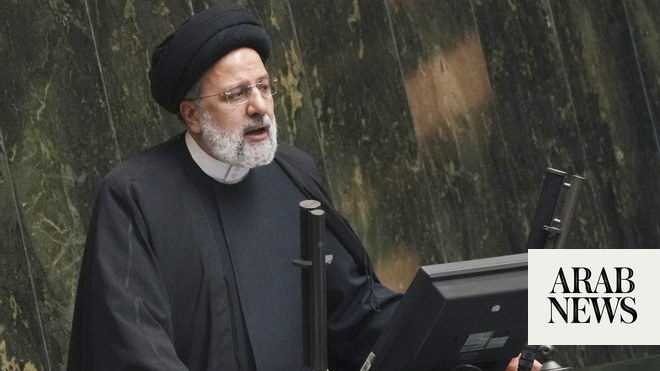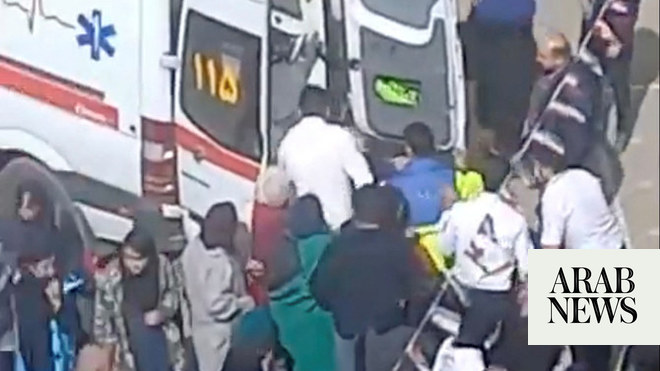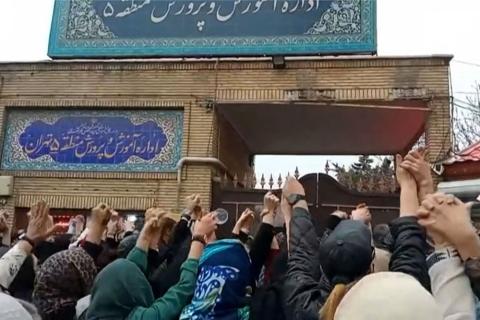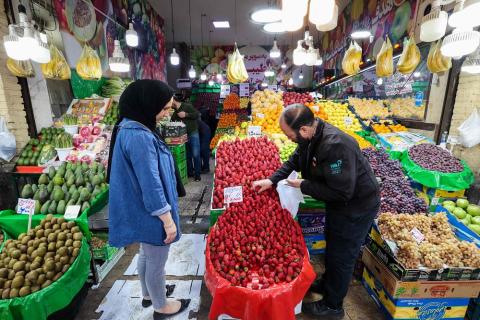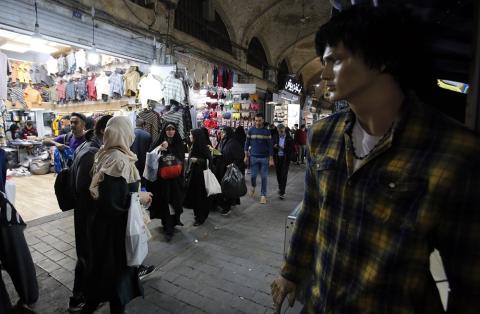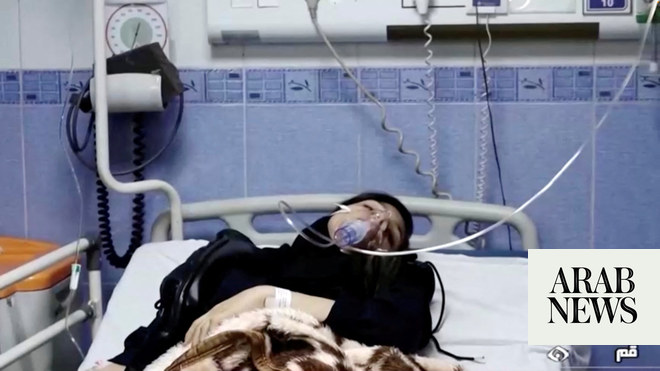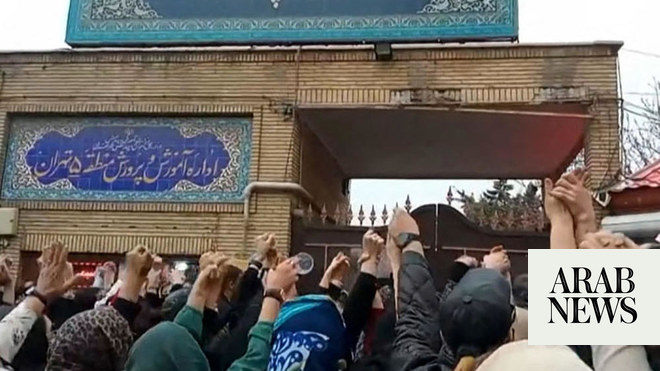
The recent poisoning of a large number of Iranian schoolgirls, which began in the city of Qom — a sacred city with strong religious symbolism for Iran’s regime — has created a crisis shrouded in ambiguity, both in terms of determining the veracity of the story and the spread of poisoning cases among schoolgirls in all Iranian towns and provinces. The individuals or group responsible for the poisonings are similarly shrouded in obscurity.
Some blame factions within the Iranian regime, while others accuse radical hard-liners. Meanwhile, the regime is accusing the opposition of orchestrating the crisis to mobilize the silent majority against the leadership. Conversely, the opposition accuses the regime of creating the crisis to punish the schoolgirls and women who had participated in massive numbers in the recent protest movement following the death of the young Kurdish woman Mahsa Amini at the regime’s hands last September.
Controversial comments by Iran’s Deputy Interior Minister Majid Mirahmadi about a number of individuals detained in connection with the poisonings — whom the regime has accused of inciting the crisis — suggest a new possibility that could, to some degree, help in determining which narrative about the schoolgirl poisonings is most likely to be true. This is because his comments support the theory that figures close to the Iranian regime — radical hard-liners — were behind the poisonings of thousands of schoolgirls from hundreds of schools. The crisis has further intensified in recent days, with university students also being poisoned, fueling Iranian fears of similar disasters during the Nowruz celebrations.
It is entirely possible that figures close to the Iranian regime could be behind the schoolgirl poisonings. These figures may be hostile to the schoolgirls, with the poisonings serving as an unofficial expression of the regime’s disapproval and a way of punishing schoolgirls for their participation in the protest movement following Amini’s death.
Schoolgirls have spearheaded the protests and played a significant and effective part in spreading the large rallies that have rattled the regime to its core. The regime, its leaders and insiders have been exhausted in an unprecedented way by this groundswell of opposition, especially given the mounting internal crises and international sanctions and isolation that have put tremendous pressure on the Iranian leadership.
The most reasonable explanation for the pro-regime forces’ likely involvement in poisoning the schoolgirls is that the latter crossed the regime’s red lines and broke its unspoken but well understood taboos by participating in the large protests that have won support from all sectors of Iranian society. The protests have created seismic fractures within the regime’s structure and enraged the hard-line religious class, which is as fundamentally opposed to the idea of girls’ education as the Taliban in Afghanistan.
Protesters, including schoolgirls, have gleefully stomped on the supposedly inviolable sanctity of the theocratic clerics’ turbans, which hold great symbolic significance for the Iranian regime. They have also set fire to Ayatollah Khomeini’s house and to the ubiquitous portraits of Qassem Soleimani, the general who led the Quds Force until he was killed in a US drone strike near Baghdad Airport in early 2020 and who is treated by the regime as a national hero. The protesters’ actions have enraged the hard-line clerics, with the fact that the poisoning of schoolgirls began in schools in the shrine city of Qom before spreading across the country increasing the suspicions of hard-liner involvement.
The protests have created seismic fractures within the regime’s structure and enraged the hard-line religious class.
Dr. Mohammed Al-Sulami
Comments by Supreme Leader Ali Khamenei, in a speech long after the protests began, have further increased the suspicions of regime loyalists being behind the poisonings. In the speech in question, Khamenei’s suggestion that a “mild punishment” for children participating in the demonstrations could make them realize the error of their ways may have been construed by the regime’s hard-line radical elements as a green light to punish schoolgirls for their significant participation. The aim would undoubtedly be to terrorize and intimidate girls, deterring them from participating in future protests.
One striking aspect of this crisis is the belated nature of the supreme leader’s comments — three months after the crisis began. On the poisonings, he seemed indifferent, not even setting aside time to discuss this issue, which continues to cause alarm, concern and fear in Iranian society. He instead addressed the matter during the Tree Day celebrations after speaking extensively about the value of trees and their role in environmental preservation. Yet, Khamenei appeared to query if the poisonings had even taken place at all when he stated: “If the crime is proven to have occurred, the heaviest penalty would be inflicted on the culprits.”
Khamenei’s remarks, whether made before or three months after the crisis began, raise important questions, such as: Did the regime just realize there was a crime being carried out after more than 5,000 girls were poisoned? Is the regime attempting to cover up the identity of the true perpetrators by becoming indirectly involved in the crisis in order to hide the fingerprints of its involvement? Has the regime become so unable to control its own inner circles and elements close to it that similar crimes could be committed in the future without it having the ability to stop them? Is three months not more than enough time to find the perpetrators? Given this time period, the regime should be held accountable for its negligence and failure to find the criminals.
All of the aforementioned backs up the remarks of Iran’s deputy interior minister that the perpetrators are elements close to the Iranian regime.
To conclude, the poisoning of schoolgirls is a new crisis added to the regime’s existing crises, which have exhausted it as a result of its internal and external policies and orientations. These crises contribute to deepening and further exposing the regime’s inability and failures internally and externally, regardless of whether it is directly responsible for them. The crisis could snowball in the coming weeks, expanding to other segments and brackets within Iranian society during the Nowruz celebrations, especially because Iran is becoming a country plagued by challenges and bound by crises — with protest intervals decreasing — not to mention the stalled nuclear talks.
The regime hoped that the nuclear talks would have resulted in a settlement, leading to sanctions relief and a subsequent improvement in living conditions, hence mitigating the impact and slowing the pace of popular and factional protests in Iran.
• Dr. Mohammed Al-Sulami is president of the International Institute for Iranian Studies (Rasanah). Twitter: @mohalsulami
Disclaimer: Views expressed by writers in this section are their own and do not necessarily reflect Arab News" point of view




